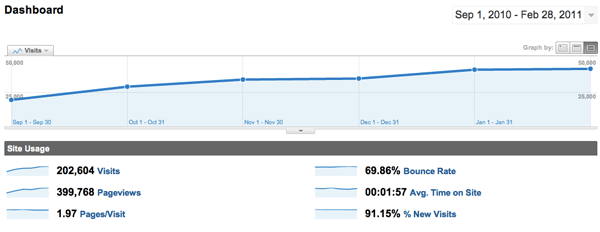Who will update the website?
Again, having a plan from the start about who is going to do what is essential, even after the website is complete. If you are going to utilize your internal staff to update and maintain the website, make sure they have the knowledge to do so properly. Don’t sign-up for a CMS that is complicated and requires knowledge of HTML and CSS to update.
How will you keep your website fresh?
Are there areas on your site that you can easily change throughout the year to keep your visitors engaged and coming back? Many businesses opt to have a news section on their website or a blog. This allows them to constantly have fresh content and share news on new products, services and happenings at their business.
Inspire. Engage. Intrigue.
Hire a designer to help you with changing promotions. Keeping your site fresh and engaging is ESSENTIAL in today’s state of the web. If your customers come back and see there isn’t anything new or interesting, chances are likely they won’t be back again.
How-to stay in touch with your customers
Consider integrating your website with social media outlets. It’s a great way to let your customers know that you have new content or offerings that they should take a look at.
To get you customers to follow you on Twitter or like your business on Facebook can be a challenge. Offering discounts, giveaways, and showcasing their comments on your website or next email promotion can help to entice sign-ups. Twitter is a great place to offer personalize customer service. It’s a free option in place of a live chat.
The main benefit to using social media channels such as Facebook or Twitter is in the numbers. it’s where your friends are. Great recommendations from friends can speak wonders. Don’t think of social media as another place to put your ads.
Connect on a more personal level. After-all, your business is also just a group of people providing solutions to other people.
No matter how awesome you think your hold music is, we all hate waiting.
Many times, interacting with customers on Twitter can be faster for them then being put on hold on the telephone. It’s also much less frustrating as you don’t have to hang your head on your phone while you wait.
Email newsletters are an excellent way to communicate with your customers.
Don’t forget traditional print methods! A postcard can speak wonders in today’s world of jam-packed inboxes.
Whichever medium you use to alert your customers to your changing content, make sure you do it in one way or another. It’s essential to the growth and success of your website.
Backup
Make sure all your hard work is protected. Keep a backup of your site in multiple locations. It’s also important to back-up your data regularly. This includes all files that are often changing such as product descriptions, images, customer comments and reviews, blog articles and news feeds, etc.
Ask your external team if they save their clients sites and for how long. It never hurts to be too safe.
Here are a few backup solutions that may work well for a small business: IDrive, Carbonite, & Mozy.
Tracking goals & results
Utilizing Google Analytics can help you track the success of your website. All it takes is a little piece of code inserted into the footer of each page on your site. The footer is a better place for this type of code as it doesn’t need to display to the user so it can load last, as a website loads from top to bottom. You don’t want this code taking precedence before any other crucial elements visible to your customer.

Like mentioned earlier, Google Analytics can tell you all sorts of data about your visitors. What browsers they are using, how long they stay on your website, whether they are new or repeat visitors, where they are clicking on your web pages, how much money a particular page is bringing in and more!





